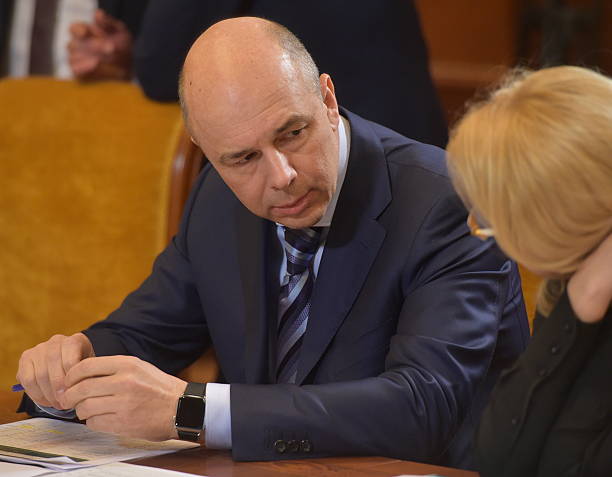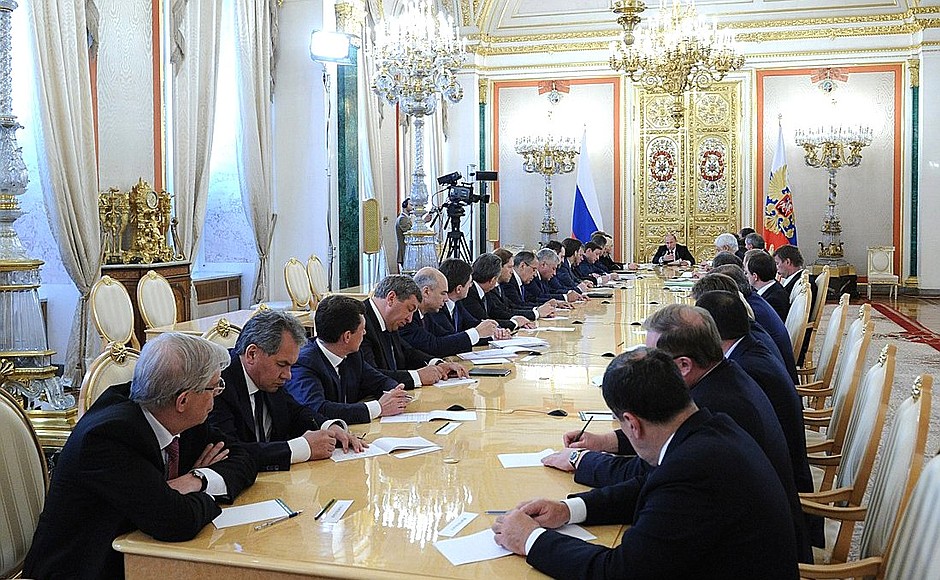The budget system of Russia is a set of budgets of the federal, regional and municipal levels, as well as extra-budgetary state funds. It is based on economic relations and is regulated by Russian law.

The state budget
It is recognized as the country's main financial plan for the current year. The state budget has the force of federal law and is presented in the form of a normative act containing revenue-expenditure items. Its approval is within the competence of parliament.
The main functions of the state budget are:
- Redistribution of income and GDP.
- State regulation, stimulation of the economic sphere.
- Financing social policy of the state.
- Monitoring the formation and use of a centralized monetary fund.
Budget device
Under it is understood the organization of the financial system, the principles of its formation. The unity of the budget structure is ensured by a single regulatory framework, the use of common classifications, documentation forms, tax and socio-economic policies.
Article 28 of the BC (Budget Code) sets forth the principles of the financial system of Russia. Among them:
- Independence of budgets.
- Balance
- Completeness and accuracy of information.
- Rationality and efficiency of use of funds.
- Aggregate (total) cost coverage.
- Targeting, target nature of expenses.
- Publicity (openness).
Description of the federal budget of the Russian Federation
As mentioned above, the state budget is the most important financial document, fixing the direction of expenses and revenues to the treasury. The structure of the federal budget is formed by taxes, state credit and government spending.
In its economic content, it is a form of education and spending of a centralized monetary fund. It is the federal budget in the Russian Federation that acts as the main means of redistributing the income of the population, through it the mobilization of financial resources necessary for regulating the economy, implementing social programs, as well as strengthening the country's defense capability is carried out.
The right of the Russian Federation to an independent budget is established in the Constitution, in article 71. The formation of the financial system, the rules for the execution of articles are enshrined in BC. In accordance with the provisions of the Code, the Government submits to the State Duma a draft federal budget before October 1 of this year.

Features of the preparation of the financial plan
The most important link in the state financial process is the development of the federal budget. It is carried out by the Ministry of Finance on behalf of the Government. Formation of the structure of the federal budget should begin in 10 months. before the start of the fiscal year.
The tasks of the Ministry of Finance are to develop:
- The draft financial plan.
- The design of key indicators for the medium term. They are developed on the basis of the Government program, socio-economic forecast, consolidated balance sheet.
- The draft federal law on the federal budget for the coming year.
General rules
To develop the federal budget, the authorized executive structure organizes the preparation of a socio-economic forecast. The Ministry of Finance provides drafting of key indicators, the formation of the draft Federal Law "On the state budget."
At the first stage of the development of the federal budget, executive structures select a forecast plan for economic development for the coming year. It reflects key macroeconomic indicators that describe the state of the national economic complex.
When analyzing the federal budget, the Ministry of Finance determines the characteristics of the financial plan for next year and forms the procedure for the distribution of expenses. Within 2 weeks from the date of their adoption by the Government, the Ministry, based on the functional classification of costs, performs the following actions:
- Directs design to federal executive bodies. They, in turn, distribute them among specific recipients of federal budget funds.
- It informs executive regional structures about the nature of inter-budget relations between the Russian Federation and its subjects, the methodology for their formation for the coming year and the medium-term prospect established by law.
At the second stage of the development of the federal budget, executive government agencies carry out:
- Distribution of ceiling funding for the coming year. It is carried out on the basis of economic and functional classifications of expenditures of budgets of constituent entities of the Russian Federation, municipalities, and cities of the federal government. values and by specific recipients.
- The development of proposals for organizational and structural transformations in the social sphere and economic sectors, the abolition of legal acts, the implementation of which involves the spending of treasury funds not provided with reliable, real sources in the coming year, the suspension of these regulatory documents or their phased introduction.
Necessary materials
The established procedure for the development of the federal budget ensures consideration and approval of its draft prior to the upcoming fiscal year, as well as approval of a number of indicators in the process of analyzing the financial plan.

The draft Federal Law "On the state budget" is submitted by the Government to the lower house of Parliament. The direction of the law on the federal budget is carried out until August 26 of the current year. At the same time, the following materials are applied to the project:
- Preliminary results of the country's socio-economic development over the past period of the current financial year.
- Forecast of the functioning of the socio-economic sphere for the coming year.
- Key areas of tax and budget state policy for the future.
- Development Plan for State and Municipal Economic Sectors.
- Forecast of the consolidated balance sheet throughout the country for the coming year.
- Consolidated Budget Forecast.
- Key principles and calculations on the relationship between the state budget and the consolidated budgets of the constituent entities of the Russian Federation.
- Draft targeted programs of federal and regional development, targeted investment policy for the coming year, state armament programs, privatization programs of municipal and state enterprises, external borrowing, internal public debt structure.
- International treaties that have entered into force for Russia and contain its financial obligations for the coming year.
- Calculations by articles of classification of revenues, sections, subsections, federal budget deficit.
- The list of regulatory documents, which are canceled or suspended for the coming year due to the lack of budget funds for their implementation.

State Duma Review
The bill is debated by the lower house in four readings. At the first stage, his concept is studied. The forecast of socio-economic growth for the coming year is analyzed. The first reading also discusses key areas of tax and financial policy, the principles of building the relationship of budgets of state and regional levels.Deputies study the draft program on state external borrowing, analyze the possible financial support of the federal budget, and external financing of its deficit.
During the first reading, the Chairman of the Government, representatives of the Budget Committee, as well as the 2nd profile committee and the Chairman of the Accounts Chamber enter. Based on the results of the discussions, the State Duma makes a decision on rejection or adoption of the bill.
In the second reading, deputies analyze and approve the expenses for the coming year in accordance with the sections of the functional classification within the total budget expenditures approved at the first stage of consideration. In addition, the size of the fund for financing the subjects of the Russian Federation is being agreed.
The third reading states:
- costs in accordance with the subsections of the functional classification and according to the main managers;
- distribution of funds of the regional support fund for the relevant entities;
- expenses for financing targeted, targeted investment and other programs;
- projects of state loans to foreign countries.
In the fourth stage, a vote is taken for the entire bill as a whole. At the same time, amendments cannot be made to it.
Local budget
It is a form of education and expenditure of funds for the fiscal year, serving to ensure the functions and tasks assigned to the subject of municipal authority, through the discharge of expenditure responsibilities of the relevant MO.

Incomes of the local budget, according to the provisions of the BC, are formed from own revenues and deductions of regional and federal regulatory fees and taxes. The key sources of funds available to the municipality are:
- Taxes.
- Non-tax revenues.
- Revenues from own economic activity.
- Municipal loan.
Tax income
They include funds received from mandatory local contributions. They are, in particular, land tax and property tax on individuals.
In addition, the budgets of municipalities receive:
- Personal income tax.
- UTII.
- UST.
- State duties to be credited at the place of the legally significant action, registration or provision of documents.
Costs
They are divided into two large groups:
- Mandatory costs. These include expenses on financing payments, including those transferred to state powers. Obligations are also expenses fixed by regional and federal legislation.
- Discretionary costs. They represent the costs of the development of the local road economy, the economy, the construction sector, the maintenance of the territory and the municipal economy.
In addition, the costs are divided into their own and related to the implementation of state powers assigned to local authorities. The first group is related to solving local problems and servicing the debt of the Moscow Region. These costs can be divided into the following areas:
- The content of local authorities.
- Organization, conducting elections in the Moscow Region.
- Fulfillment of the municipal order.
- Enforcement of local regulations.
- Financial assistance to sectors of the economy, budget institutions.
- Serving financial liabilities.
- Implementation of targeted programs of territorial significance.
- Investing in the development of local infrastructure.
These costs are covered by funds from the MOO's own income, as well as transfers with a reduced level of security, borrowed funds, subject to the requirements for the budget deficit.

The exercise of powers delegated to local authorities by state bodies involves:
- Ensuring state guarantees of the rights of citizens to a public, free preschool, additional education in the framework of the implementation of approved curricula.
- Formation of commissions on juvenile affairs, protection of their rights, organization of activities of these structures.
- Alignment of financial security of settlements.
- Social support and social services for senior citizens, people with disabilities, people in difficult living conditions, orphans, veterans, street children, the poor.
- Organization of the provision of specialized medical care.
- The payment of targeted subsidies to the population to pay for utilities and housing.
- Fulfillment of powers for state registration of acts of civil status.
- The construction and maintenance of roads of inter-municipal significance.
- Prevention of situations that can disrupt the functioning of life support systems, eliminating the consequences of accidents and disasters.
- Primary military registration.
- Library service for citizens.
- Implementation of programs for the protection of nature, maintaining environmental safety.
Cost analysis
According to the functional purpose, expenses are divided into the following groups:
- The costs of the manufacturing sector. This includes the costs of maintaining and developing the housing and communal services system, the national economy and environmental protection. These costs account for more than 17% of the total. Most of the funds are spent on the maintenance and development of housing and communal services. The costs of the national economy occupy a small share of local budget expenditures. They are associated with the maintenance and repair of the public roadway, subsidizing town-forming enterprises.
- The costs of improving the level of budget services, reflecting the effectiveness of the financial policy pursued in the territory of the Moscow Region. They include socio-cultural costs. They account for about 70% of the total municipal costs. Among the socio-cultural costs, the greatest weight is spent on education.

From the above information it follows that most of the budget is allocated to the development of the socio-cultural sphere. Social costs financed by local budgets account for more than 30% of the total amount of funds allocated to meet the cultural needs of the population. Another major area is the housing sector.
It must be said that the composition of expenditure items of certain types of municipal budgets may be different. It depends on the level of local economy, its jurisdiction over territorial structures of different levels.
